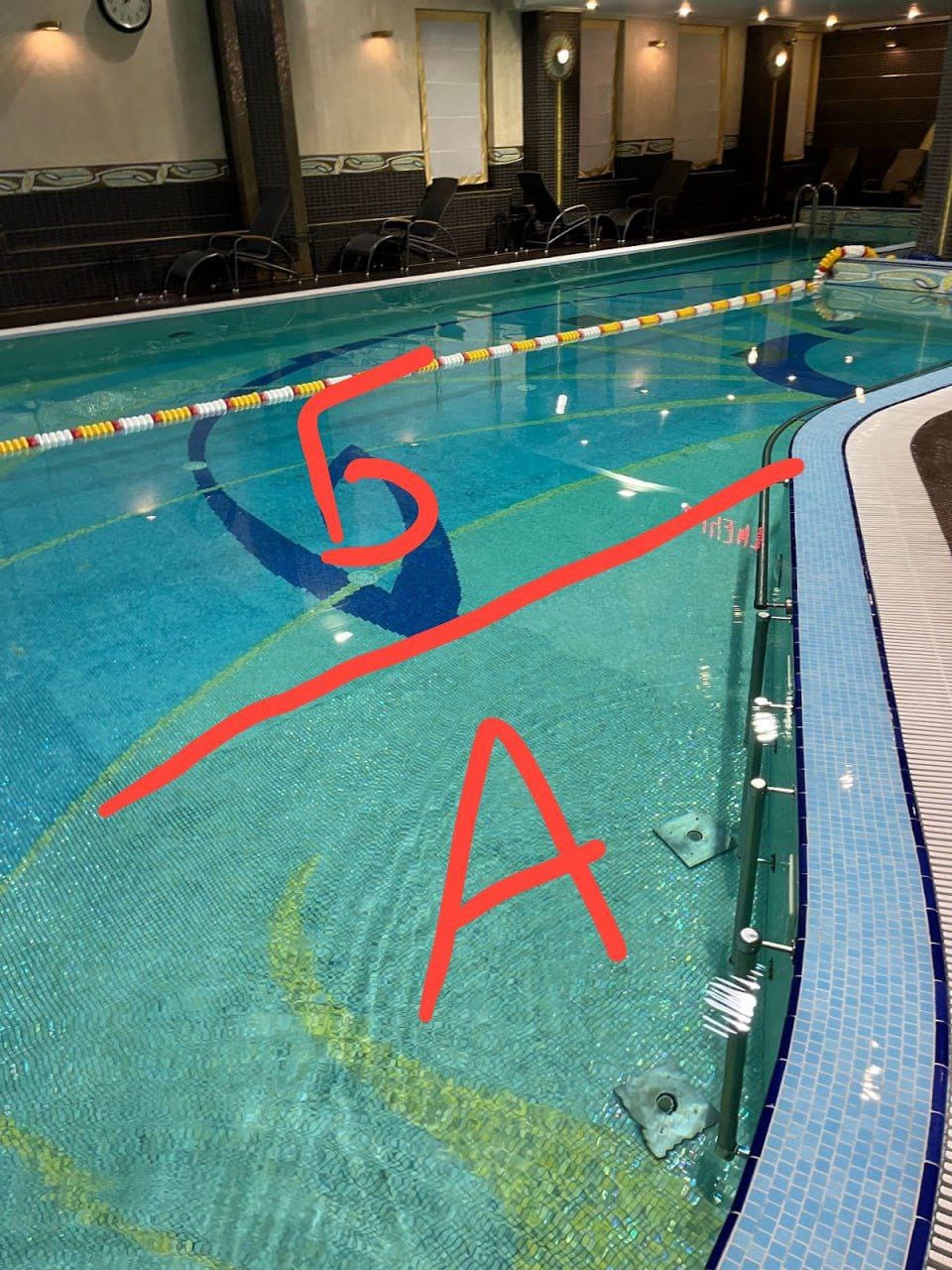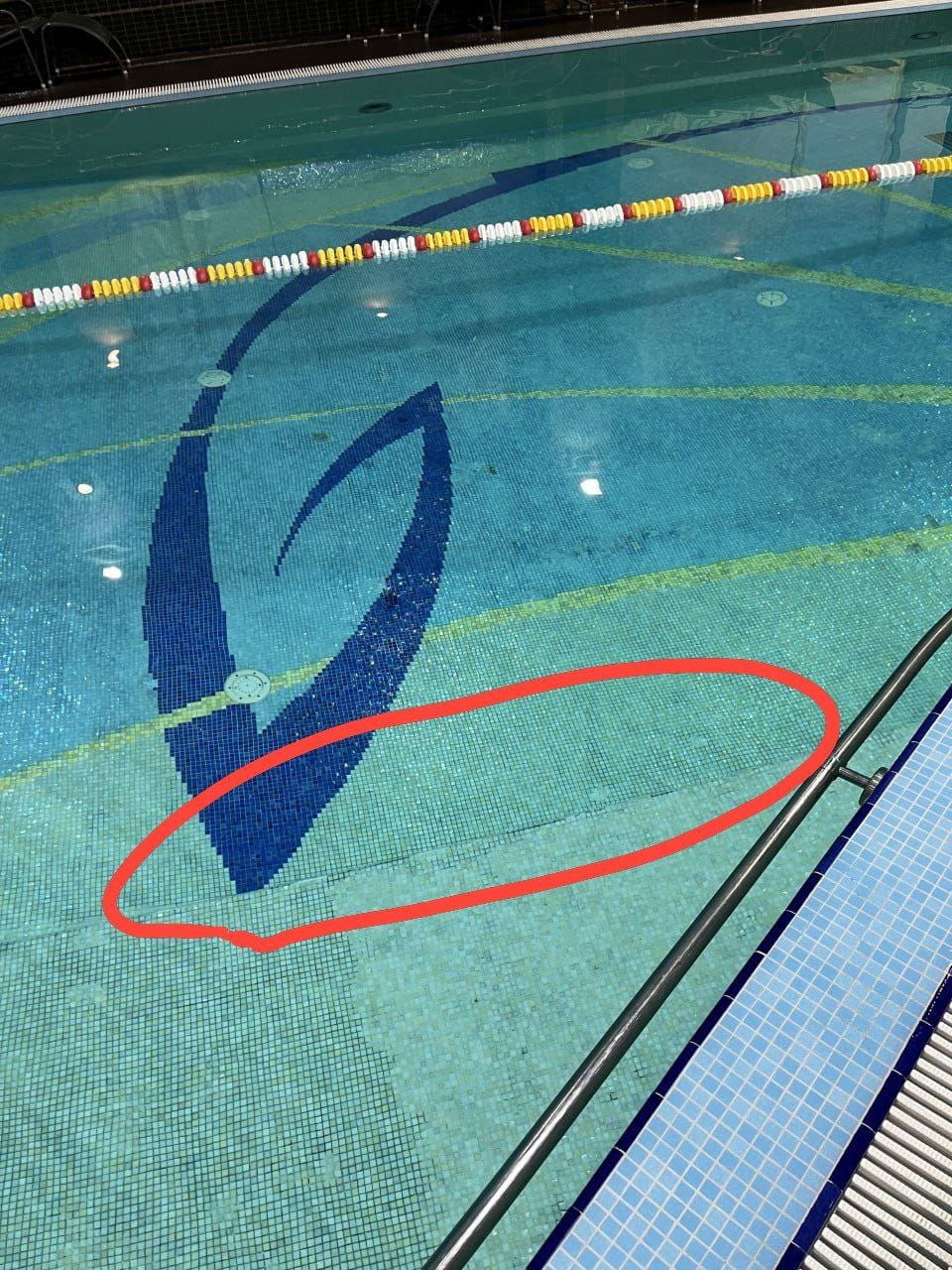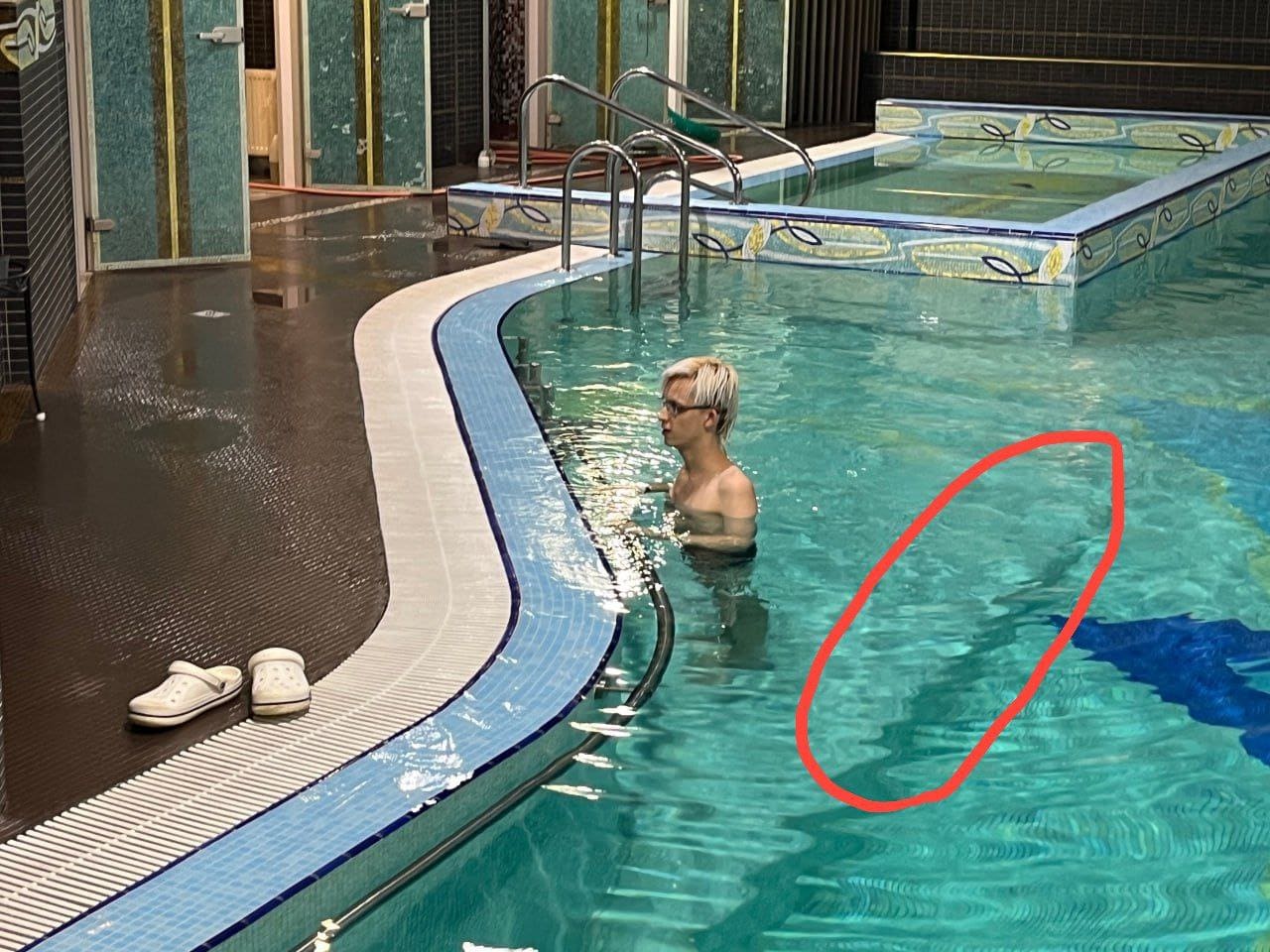What Physically Distinguishes a Brain with False Beliefs Using a Swimming Pool Example
post by YanLyutnev (YanLutnev) · 2025-04-24T00:01:41.589Z · LW · GW · 0 commentsContents
So, my current model 2) Everyday description: At the cellular level: How does the processing of "dangerous" and "safe" zones differ? (model may be incorrect) Neuron activation: Neurotransmitters: Dangerous zone: Safe zone: Role of adrenal glands: What does the division into "dangerous pool zone" and "safe zone" provide General model predictions: More specific predictions: What physically in my brain should differ so that I don't drown If there's not enough noradrenaline, will there be no anxiety? Conclusions: Simplified answer to the original question: None No comments
Question the article attempts to answer: How does a brain that remembered a pool depth of 180cm differ from a brain that remembered 200cm? And how is this causally connected to a scenario where I'm drowning in a pool because physically in my brain there was a difference in... what? (a difference from the universe where I remembered the height as 200cm and was afraid)
My motivation for writing this article: I was in a swimming pool and noticed a non-obvious pattern in the moment about how my lack of knowledge about a depression in the pool affects my motivations. In this article, I want to create my best formalization of the model and see where this predictive model transfers to other cases. An additional goal is to ground the model maximally to acquire simple associations in memory. The model is falsifiable (testable).
Author's knowledge status: I'm reading 5 books on neurobiology from scratch, a couple of popular science books, and watching videos. I'm not an expert, and this article is my attempt at rough formalization of the question. I acknowledge that the model may be incorrect in places (for calibration, I've consulted with DeepSeek). I'm not postulating what's written below as true patterns, as is usually the case in articles. Please consider this when reading. Criticism and model refinement in the comments are welcome.
Article accuracy verification status: I tested the theses from the article against DeepSeek. Those whom I asked to proofread didn't provide detailed comments.
Background: Swimming Pool I visited a new swimming pool and started swimming in circles. I can swim, but I experience stress anticipating that if I run out of strength or disrupt my swimming technique, I might involuntarily sink underwater, water would get into my ears, and my eyes would sting badly, as in the past—significant stress, but the biggest stress of course is if water gets into my nose or throat, because it would be unexpected. Fear of drowning.
Therefore, I really wanted to avoid submerging my head underwater. I walked inside the pool along the edge and developed a model that since my feet reached the bottom, it meant that opposite a certain point near the wall, it was safe to stop swimming and hope that I would feel the bottom with my feet

This was an involuntary, automatic, wordless generalization, which turned out to be false—what proved false was the assumed distance from the water surface to the bottom at a certain point.
From a distance, the bottom appeared uniform to me (I have poor eyesight)
However, at some point, a "pit" appeared
I decided that the bottom was uniform because I was standing in a place where it was uniform, and made a false generalization
When I noticed that the pool bottom in a specific area went below my height, my predictions changed, and now when shifting attention to area Б of the pool, I began to feel unease. Before observing the changed height, I felt calm about both areas A and Б.
Increased height Б -> unease in Jan's brain when modeling that the body moves to Б
(when changing the expected height of Б, unease increases)
The situation seems ordinary, simple—it falls into my category of "an inaccurate map led to false expectations."
I thought this would be a suitable simple example to try to describe the situation not through narratives about maps, expectations, predictions.
What if we try to describe this as "collection of atoms 1 moves toward A, collection of atoms 2 moves toward Б"? There are atoms that make up my body, my brain, and the pool.
I will try to describe this situation in its final form exclusively through the interaction of clusters of atoms, or cells.
My expectations, my vague image of the pool, the height of the bottom when directing attention to these sides, change the state of my neurons in the brain
So, my current model
Everyday description: I pay attention to the figure 180 cm (pool bottom height) and "connect" it with the pool height at a specific location
At the cellular level: Activation of many neurons (membrane depolarizes, ion channels open, ions redistribute, binding with ligands occurs, ...)
The same neurons are activated that model space[1] (pool) and the concept of numbers (180)
The number of activated neurons will be considered finite (and unknown)
We can expect that in the second when the memorization of the figure 180 was occurring and the mental modeling of how much the pool bottom is below the water level, we would see on a hypothetical activity of neurons a picture like this
(brain neurons forming connections in a petri dish. source)
Neurons that usually activate for "180cm" and neurons in the circuit that usually activate for "modeling bottom height" with their processes create connections where there were none before
2) Everyday description:
I predict that since the height is 180, my feet will reach the pool bottom if I stop swimming. I won't suffocate and won't experience stress. I "believe" the sign at the pool. Stress doesn't occur.
At the cellular level:
My "spatial neurons" being active give me the feeling of a "built spatial model of the pool." Previously, I "divided" the pool model into pieces - "dangerous zone" and "safe zone."
(when activating "dangerous" neurons, there's a different reaction than for "safe")
How does the processing of "dangerous" and "safe" zones differ? (model may be incorrect)
Neuron activation:
When entering a zone marked as "dangerous," not only spatial neurons are excited, but also the amygdala, which is responsible for fear processing.
In the "safe" zone, predominantly the prefrontal cortex is activated, which suppresses excessive anxiety through inhibitory neurons.
Neurotransmitters:
Dangerous zone:
- Sharp release of glutamate (excitation) → rapid signal transmission to the amygdala.
- Release of noradrenaline → increases vigilance.
- Dopamine → enhances motivation to avoid.
Safe zone:
- Serotonin dominates[2] → reduces anxiety.
- Endorphins → reduce stress response.
Role of adrenal glands:
When perceiving danger, the hypothalamus activates the pituitary gland, which releases ACTH affecting the adrenal glands → adrenal glands release:
- Adrenaline → increased pulse, muscle tension (readiness for action).
- Cortisol (if the threat is prolonged) → energy mobilization, but immune system suppression.
In the safe zone, the parasympathetic system inhibits the release of stress hormones → the body returns to a state of rest.
What does the division into "dangerous pool zone" and "safe zone" provide
Such a division allows the brain to quickly respond to threats (through the amygdala and noradrenaline) and maintain calm in safe conditions (thanks to the PFC and serotonin).
General model predictions:
From this model, we can predict that depending on which category a part of the pool falls into, the following will depend:
- different patterns of neuron activation
- release of certain hormones/neurotransmitters (in one case, less of some, in another, more of others)
- accompanying prohibitive predictions that come from which brain zone/neurotransmitter/hormone is involved (zones and hormones have limitations on expectations of their action)
More specific predictions:
- During modeling the pool height as 180cm, additional OTHER neurons will be activated than for 200cm (most neurons from all activated will be the same). Some of those that were activated for 200cm will not be activated for 180cm
- If you have side associations with the number 180, they may also be "affected" (activation of side chains where ready "pathways" on synapses already existed). However, there won't be these associations for the concept of "200cm" (neurons were not recently active and didn't "hook up").
What physically in my brain should differ so that I don't drown
Imagine that I started drowning in a universe where I remembered the pool height as 180 cm, but it's actually 200.
- probably, "spatial" neurons were activated, which linked the picture where my feet touch the bottom and my head is above water
- the process of mandatory composition of such a picture" (need to think about feet, about head) is not obligatory. There is an alternative - the habit of checking the figure (180) and if the rule to experience peace if the figure is at a certain value is met, then you can just swim without modeling anything. Most likely, the modeling process has already been in the past (like with riding a bicycle, where at some point you stop modeling leg movement)
- habitual emotions - they include activation of old neural circuits that were created based on past experience, and were activated again and again, strengthening the connection (for 180 in the context of the pool, other neurons are habitually activated than for 200, but of course most active neurons are the same in both scenarios)
- for me not to drown, it seems that the amount of released noradrenaline should be sufficient to cause what we call "anxiety." BUT.
If there's not enough noradrenaline, will there be no anxiety?
Not always. Even with abundantly released noradrenaline, the feeling of anxiety may not be present because:
- receptors are damaged or their density is reduced
- other released neurotransmitters suppressed noradrenaline (GABA, serotonin)
That is, several conditions must be met, not just "a lot of noradrenaline."
One way or another, the chemical cocktail of hormones created an unpleasant sensation. And the motivation to relax and stop swimming in the "180" zone will be based on how much noradrenaline and other neurotransmitters are currently on the receptors, and the receptors are working as they should to create this unpleasant sensation. The willingness to relax in the pool (and drown) will depend on its presence.
Conclusions:
- When modeling a pool with a bottom of 180 cm and 200 cm, largely the same neurons are activated, but some of them will differ.
- Those neurons that differ have been fused with other circuits in the past, and some of these circuits activate brain areas that result in anxiety
- for anxiety, the locus coeruleus in the brain stem and adrenal glands need to release noradrenaline (but not only it)
- for them to release, certain neurons must be activated, which in the past already led to the release of noradrenaline (that's why they hooked up and that's why it's a "habitual" emotion)
- Associations arise easily because these are already created connections between neurons. But to get "180 cm - dangerous" from the familiar chain "180 cm - safe," you must create these connections (and simply "believing" often won't work - after all, the word "dangerous" was coupled with a certain release of neurotransmitters/hormones. If this feeling of release is not sensed by the receptors, the association "dangerous" will not be coupled with the corresponding neurons that were activated in the past during "danger" (e.g., noradrenaline receptors). It won't "reach" them.
Simplified answer to the original question:
The brain with "180cm" differs from the brain with "200cm" by:
- the number and location of activated neurons
- the amount of certain neurotransmitters on receptors ("200 cm" → more noradrenaline (anxiety) and cortisol. "180 cm" → more serotonin (calmness) and GABA)
- the number of synapses in areas responsible for spatial navigation
- active brain areas: 200 cm - fear neurons (amygdala) are more involved. 180 cm - the prefrontal cortex ("everything is fine") is more active
Thank you for reading. I have goals for why I write, check them out in my profile. I am a rationalist and value the accuracy of beliefs. I am glad if my models are refined, criticism is welcome. This article has a Google Doc version where you can conveniently highlight flaws in the article with color and leave comments. This will affect the accuracy of future articles.
If you've seen errors in the article and are annoyed that a novice in the topic is writing - I don't have 10 years to study, and some goals related to attracting attention, I want to accomplish faster, so I write. Besides, I represent a system of reasoning that shifts the "acceptable level." If you're interested in me writing with the same general principle but more accurately - contact me and let's cooperate.
- ^
- ^
Claude writes “Serotonin does not “dominate” in safe zones - its action is complex and depends on the type of receptors.”
0 comments
Comments sorted by top scores.


